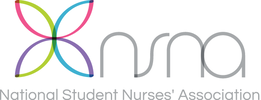- Establish a Population and Global Health Committee, or
- Participate in a committee already established.
By participating in this activity, you will be able to:
- Identify and list your leadership attributes;
- Evaluate your capacity for leadership;
- Contribute to your professional identity in nursing formation;
- Demonstrate an understanding of the complex role organizations play to serve the community health needs.
Start-A-Committee Learning Objectives
- Prepare an agenda and to run (or participate in) a committee meeting;
- Present written and verbal reports of progress made toward reaching committee goals;
- Conduct a population and global health assessment;
- Plan and implement a population and global health project based on needs assessment;
- Articulate the outcomes expected and evaluate the project to determine if outcomes were accomplished;
- Practice collaboration among peers.
Population and Global Health Projects
School A CHAPTER Committee Responsibilities*
- Evaluate the effectiveness of disaster preparedness activities conducted in the past.
- Review resolutions relevant to community health and disaster preparedness that were passed at school, at your state convention, and at NSNA's Annual Convention.
- Identify two or three goals and a theme for the year.
- Become familiar with NSNA ans state disaster preparedness contests and applications.
- Read NSNA's Population and Global Health Project Guidelines.
- Conduct a disaster needs assessment.
- Plan and implement a disaster preparedness project based on the assessment.
- Publicize disaster preparedness activities.
- Initiate and facilitate appropriate partnerships with American Red Cross and other disaster organizations.
- Implement the project that can highlight education presentations, development of school or community awareness projects, or disaster-kit preparation.
- Evaluate the effectiveness of the project.
- Complete the NIMS certificates as outlined in NSNA's Population and Global Health Guidelines.
- Submit a project for NSNA Disaster Preparedness Award.
For a list of attributes and competencies for future nurse leaders and managers, click here.
For a printable version of the information above, click here.
For a printable version of the information above, click here.
Copyright © 2024

